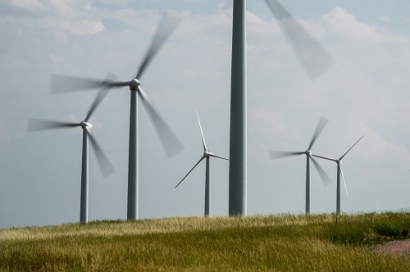
Inertia determines how quickly frequency changes on the electricity system. The higher the level of inertia the lower the level of RocoF (Rate of Change of Frequency) and the more time National Grid ESO has in returning frequency back to stated levels. Inertia levels have been reducing on the electricity system in Great Britain over recent years with the increasing penetration of variable renewables and closure of some large scale thermal assets. Large scale thermal assets typically provide inertia to the system as they are synchronously coupled to the network, unlike most renewable technologies.
Data from research and analysis firm, Cornwall Insight, highlights that wind was the first most utilized renewable technology asked to turn down in the BM.
Further analysis also showed that of the top 14 onshore wind generators by accepted bid volumes – those asked to turn down production – all were located in Scotland in August 2019.
The chart below shows this price range for the top 14 onshore wind generators by accepted bid volumes in August. It also indicates that bid prices were in the range of -£65/MWh to -£73/MWh. As a result, generators were asked to turn down their output.

James Brabben, Wholesale Manager at Cornwall Insight , said, “This trend is fundamentally down to the high proportion of onshore wind located in Scotland, but also constraints on the network. Effectively when there is high wind output in Scotland, especially Northern Scotland, restrictions on the physical network make it difficult to transport power to areas with more demand which are predominantly located further south.”
According to Brabben, National Grid will constrain wind production to avoid system issues and provide a constraint payment. He stated the issue has been made worse recently by problems surrounding the newly commissioned High-Voltage Direct Current Western Link. Instead of reducing constraint payments recently these payments have hit record monthly highs this year and topped £8.5 million in August.
“Constraints are clearly reflected in BM actions, analysis from Cornwall Insight shows that 91% of wind actions taken in August are what is known as ‘SO-flagged’. This is where balancing actions are flagged as system issues – such as constraints – rather than energy issues,” he said.
“The high volume of flagged actions clearly shows how physical system constraints are impacting the BM, leading to large volumes of wind generation each month being curtailed. While the development of further onshore wind in Scotland is crucial for further growth in renewable electricity, interactions with the physical network will create challenges and likely lead to greater levels of activity in the BM unless further network reinforcements or solutions are found.”

